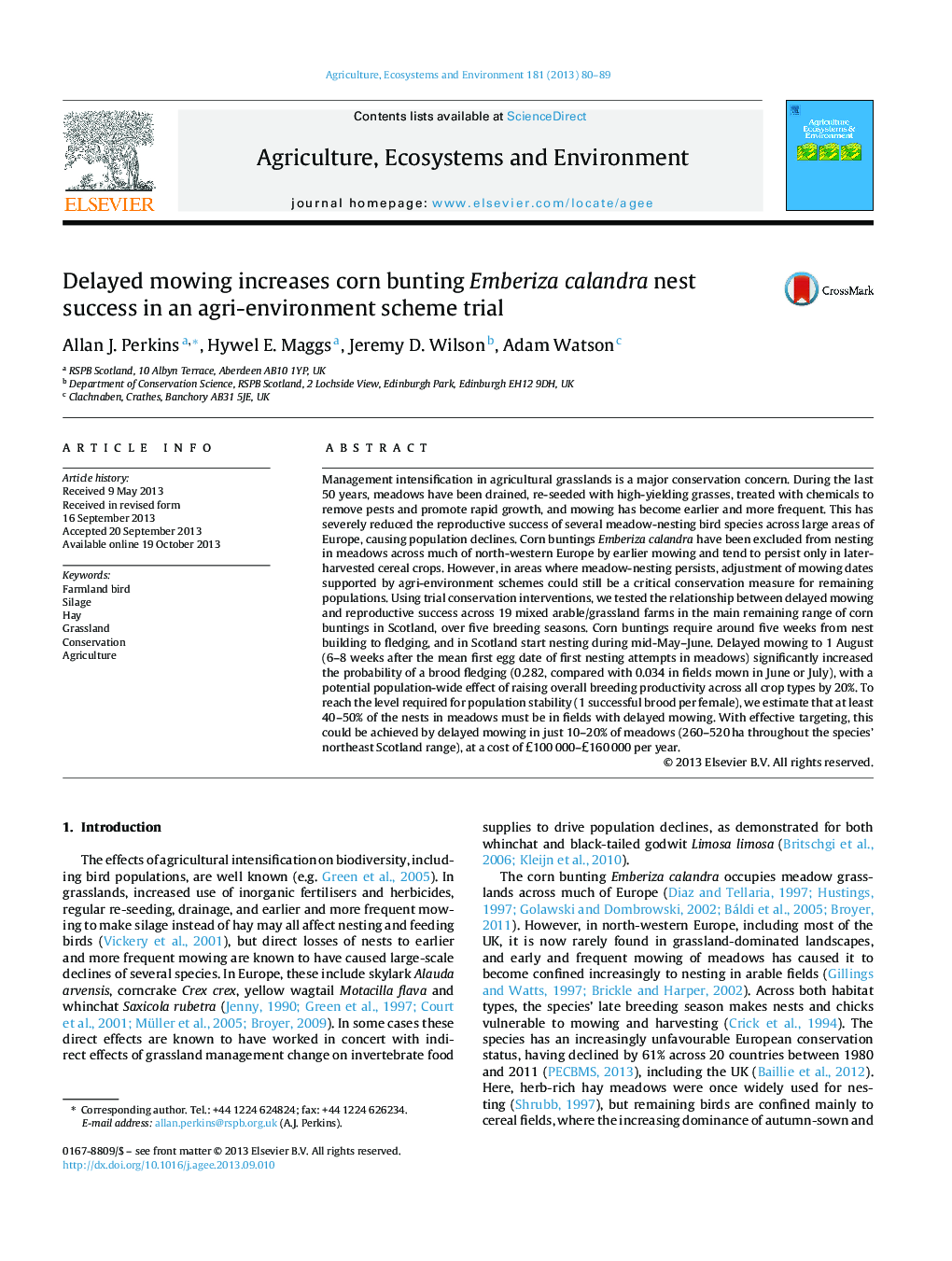| کد مقاله | کد نشریه | سال انتشار | مقاله انگلیسی | نسخه تمام متن |
|---|---|---|---|---|
| 2414137 | 1552071 | 2013 | 10 صفحه PDF | دانلود رایگان |

• Meadow-nesting corn buntings suffer high rates of nest loss during mowing.
• Trial conservation measures to delay mowing increased reproductive success.
• At a population level, delayed mowing may raise annual breeding productivity by 20%.
• Under current schemes, delayed mowing covers 548 ha of Scotland's meadows.
• If targeted well, this scale of deployment can reverse the national population decline.
Management intensification in agricultural grasslands is a major conservation concern. During the last 50 years, meadows have been drained, re-seeded with high-yielding grasses, treated with chemicals to remove pests and promote rapid growth, and mowing has become earlier and more frequent. This has severely reduced the reproductive success of several meadow-nesting bird species across large areas of Europe, causing population declines. Corn buntings Emberiza calandra have been excluded from nesting in meadows across much of north-western Europe by earlier mowing and tend to persist only in later-harvested cereal crops. However, in areas where meadow-nesting persists, adjustment of mowing dates supported by agri-environment schemes could still be a critical conservation measure for remaining populations. Using trial conservation interventions, we tested the relationship between delayed mowing and reproductive success across 19 mixed arable/grassland farms in the main remaining range of corn buntings in Scotland, over five breeding seasons. Corn buntings require around five weeks from nest building to fledging, and in Scotland start nesting during mid-May–June. Delayed mowing to 1 August (6–8 weeks after the mean first egg date of first nesting attempts in meadows) significantly increased the probability of a brood fledging (0.282, compared with 0.034 in fields mown in June or July), with a potential population-wide effect of raising overall breeding productivity across all crop types by 20%. To reach the level required for population stability (1 successful brood per female), we estimate that at least 40–50% of the nests in meadows must be in fields with delayed mowing. With effective targeting, this could be achieved by delayed mowing in just 10–20% of meadows (260–520 ha throughout the species’ northeast Scotland range), at a cost of £100 000–£160 000 per year.
Journal: Agriculture, Ecosystems & Environment - Volume 181, 1 December 2013, Pages 80–89